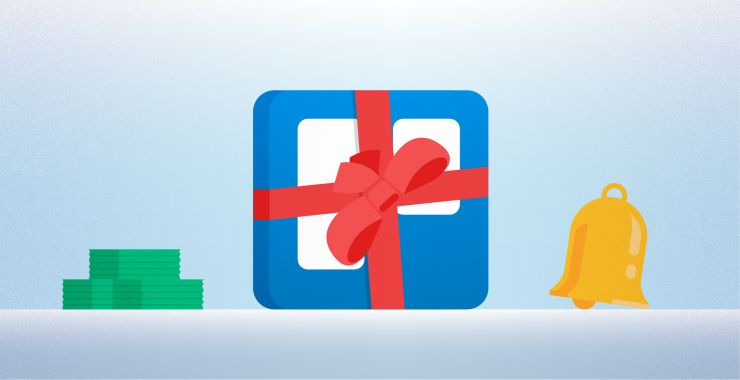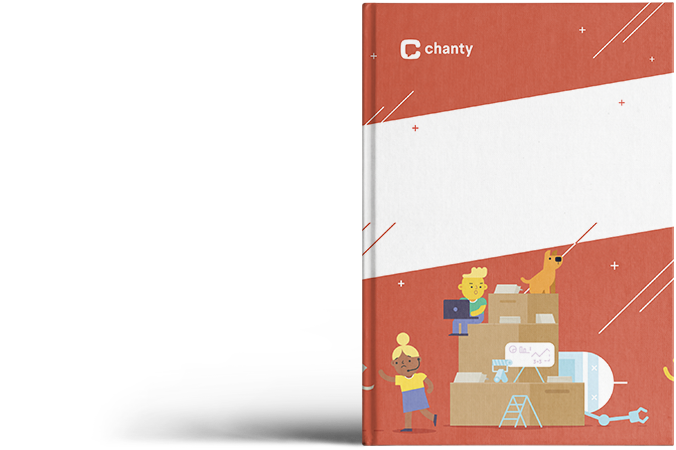Trello, the visual project management tool that’s famous for its user-friendly Kanban boards, has come a long way since it first launched in 2011. It was originally designed to help teams manage tasks and projects more efficiently, and it quickly gained a following thanks to its intuitive design and flexibility. Fast forward to 2024, and Trello is still going strong in a competitive market, evolving to meet the needs of both individuals and teams across various industries.
While Trello isn’t as old as some software solutions like PayPal and Basecamp — having only been around for thirteen years — it certainly seems like it’s been around forever. With over 50 million users, it’s clear that this task management platform is here to stay.
One of the best things about Trello is that the main functions are completely free. This means anyone can create boards, lists, and cards to help them get organized, and there’s no cost involved. That makes Trello a great option for freelancers, startups, and larger organizations alike. Of course, premium subscriptions are readily available to those interested in the extra perks that come with them.
For SMBs — or even larger organizations that just want to keep their overhead low — cutting down on costs is paramount to financial wellbeing. In an effort to keep your wallet filled and your team running smoothly, we decided to write this article.
In this article, we’ll give you a full overview of Trello’s pricing, exactly what you get for the money, and how to reduce the amount of cash funneled toward Atlassian. If you’re a one-person business or part of a larger company with lots of projects on the go, there’s a lot you can learn about how Trello can help you in 2024. Be sure to read to the end to get the full benefit of this guide.
Trello pricing plans
| Free | Standard | Premium | Enterprise | |
| Cost | $0/month/user | $5/month/user | $10/month/user | $17.50/month/user |
| Minimum Users | 1 | 1 | 20 | 25 |
| Max Team Boards | 10 | Unlimited | Unlimited | Unlimited |
| Max File Size | 10 MB | 250 MB | 250 MB | 250 MB |
It’s worth noting that all of Trello’s plans include unlimited personal boards, cards, lists, and 2FA.
Trello — free vs. paid
Free CAN be enough
If your task management needs are rather light, then you might find that Trello’s free plan is sufficient for the task at hand. This is especially true for those who use the platform to self-manage their workflow rather than oversee the productivity of others.
The fact that you get unlimited personal boards means you won’t really notice the freemium limit unless you start making team boards — meaning individuals won’t have as much incentive to upgrade to a paid plan.
There are a few things you’ll notice if you’re using Trello as a free user. For example, free users don’t get access to priority support. While this might seem like a minor issue at first, having a quick way to get technical support can be really helpful when problems come up.
Observer
You also won’t be able to reap the benefits of Trello’s observer functionality unless you get a paid subscription. This is Atlassian’s take on guest users since observers can see boards — and all cards within them — as well as vote and comment.
They, however, cannot edit cards, move them around, tick boxes on checklists, upload attachments, or alter board settings. This is a perfect way to keep clients in the loop on the progress of a project without having to worry about them messing with the actual cards.
Observers are still able to download attachments on cards and export the entire board if they so choose. With that being the case, it’s advised that you only give observer access to those you trust lest you end up with corporate espionage issues.
Views, integrations, and backgrounds
Free users will need to stick to the Kanban view since both the map and calendar views aren’t available to those without a paid subscription. While the absence of the voting feature and an inability to create more than 10 team boards are limiting, there’s a far bigger restriction in play.
One significant drawback of the free plan is the lack of access to Trello’s extensive integration options. Free users cannot connect with crucial apps such as Google Drive, Slack, and CRMs like Crmble, which can greatly enhance productivity and streamline workflows.
In terms of customization, the free Trello plan has some limitations. For instance, you can’t add your own backgrounds or stickers, which are only available to Business Class and Enterprise users. This means that those using the free version can’t personalize their boards to fit their style and preferences.
To sum up, while Trello’s free plan has some great tools for personal project management, its limitations might make it tricky for larger teams or more complex projects. If you want a more robust experience, it might be worth thinking about upgrading.
Hidden Costs of Trello in 2025
Trello looks affordable at first, but the real costs can sneak up on you—especially if you’re using it for business.
First, the free plan has major limits. You only get 10 boards per workspace, which might work for small teams but won’t scale well. Need unlimited boards? You’ll have to upgrade.
Then, there are Power-Ups—Trello’s add-ons for automation, analytics, and integrations. While some are free, many advanced ones (like time tracking, Gantt charts, or CRM tools) come with extra fees. Even on paid plans, you might have to shell out more for the features you really need.
Storage is another big factor. Free and Standard plans limit file uploads to 10MB per attachment, while Premium and Enterprise allow 250MB. If your team frequently shares large files, you’ll need to pay for a higher-tier plan or use external storage.
Per-user pricing can get expensive. Trello’s Standard, Premium, and Enterprise plans charge per user. That means as your team grows, so does your bill. A small team might find it affordable, but larger organizations will see costs rise fast.
Automation limits apply too. Butler, Trello’s automation tool, has usage caps based on your plan. Free users get just 250 command runs per month, while Standard users get 1,000. Need more? You’ll have to upgrade again.
Lastly, key integrations are locked behind higher plans. Essential business tools like Jira, Salesforce, and advanced reporting features are only available on Premium or Enterprise. If your team relies on deep integrations, expect additional costs.
Now that we’ve covered Trello’s hidden costs, let’s look at ways to keep your expenses in check.
How to pay less for Trello
Stay free
Obviously, the easiest way to avoid shelling out a large chunk of change on Trello is to keep your team on the free plan. This will ensure that both your monthly and annual costs for the software stay at a cool $0.
Standard plan
There are several effective strategies to explore when considering how to save money on Trello’s standard plan, which costs $5 per user per month when billed annually. First and foremost, opting for annual billing instead of monthly payments is crucial.
By committing to an annual plan, you reduce the overall cost per user, which can lead to significant savings over time. This approach not only provides better financial predictability but also ensures uninterrupted access to the features you need.
If your team doesn’t need access to all the additional features right away, think about starting with a smaller number of paid users. Think about who on your team really needs access to the extra features that the Standard Plan offers, like having as many boards as you want, sending larger files (250 MB), or using advanced checklists.
To keep costs down just assign the paid plan to the people who really need it, and keep the free plan for anyone who doesn’t. Also, only use Power-Ups and automation when you really need them. This way, you won’t be paying for tools you don’t use.
Finally, make sure you keep up to date with the latest Trello updates. You might find new features added to your existing plan, which could help you to optimize without having to upgrade.
Premium
For those who eyeing the Premium Plan, always opt for annual billing. Trello’s Premium Plan costs $10 per user per month when billed annually, which is way cheaper than the $12.50 per user per month you’d pay with monthly billing. If you sign up for an annual plan, you can save on those monthly costs while getting all the benefits of the Premium Plan for a whole year.
Keep an eye out for seasonal promotions or discounts from Trello and other SaaS companies, especially during big sales. Sign up for Trello’s newsletter or check Atlassian’s website for offers.
It’s also a good idea to try out any free trials to see what features you like before you commit. If the Standard Plan has everything you need, you might not even need Premium.
Enterprise
At first glance, you may be wondering why we’d even talk about the pricier enterprise plan (try saying that 10 times fast) when the focus of this article is saving money. There’s more to it than meets the eye though.
Trello’s Enterprise Plan starts at $17.50 per user per month, but the pricing model works on a sliding scale, which means the more users you have, the lower the per-user cost. For example:
| User Count | 20 (minimum) | 1,000 | 2,500 | 5,000 (max*) |
| User Pricing | $17.50/month | $13.13/month | $9.75/month | $7.38/month |
This way, the Enterprise Plan is a lot more affordable on a per-user basis for larger teams, especially when compared to Trello’s Premium plan, which is fixed at $10 per user per month when billed annually. So, as your team gets bigger, the Enterprise Plan can actually work out cheaper overall.
Trello alternatives
Price isn’t everything. Generally speaking, functionality is usually just as important as the pricing of a platform, if not more decisive in some cases. That’s why we decided to compile a few viable alternatives to Trello along with their respective monthly costs.
| Tool | Plans | Pricing annually |
| Slack + Workstreams Note: free users cannot use integrations such as Workstreams. | Free Pro Business+ Enterprise Grid | $0/month/user $4/month/user $15/month/user Custom |
| Asana | Personal Starter Advanced Enterprise Enterprise+ | $0/month/user $10.99/month/user $24.99/month/user Custom Custom |
| Monday.com | Basic Standard Pro Enterprise | $9/month/user $12/month/user $19/month/user Custom |
| ProofHub | Essential UltimateControl | $45/month (unlimited users) $89/month (unlimited users) |
| Basecamp | Basecamp Basic Basecamp Pro Unlimited | $15/month $299/month (unlimited users) |
| Freedcamp Note: enterprise subscriptions have no monthly option and thus must be paid annually. | Free Pro Business Enterprise | $0/month/user $1.49/month/user $7.49/month/user $16.99/month/user |
| Chanty | Free Business | $0/month/user $3/month/user |
Some of the solutions above also have discounts for those who bill annually, so be sure to visit their websites. If you decide to go for Slack or Asana, then check out our pricing guides on both of them to learn how you can save money while using those platforms too!
How does Trello compare to Chanty?
Affordability
If you’re eyeing both options but aren’t sure which one is the right pick for you, then this section should help you make up your mind by highlighting the differences between the two. Let’s start with the focus of this article: pricing.
Trello has a pretty generous free plan, especially for individuals or small teams. As teams get bigger and need more advanced features, Trello’s paid plans start at $5 per user per month for the Standard plan and can go up to $17.50 per user for its Enterprise plan. While these plans offer some pretty advanced capabilities, the costs can get pretty high for larger teams, particularly when you need a lot of Power-Up integrations.
Chanty, on the other hand, has a more affordable pricing structure. The free plan is perfect for small teams, with unlimited messaging and a built-in task manager – ideal for startups and businesses on a tight budget. Chanty’s paid plan starts at just $3 per user per month, making it one of the most affordable team communication tools around in 2024. If you’re looking for a way to communicate seamlessly with your team while also managing tasks at a lower cost, Chanty is a great option.
Task management and team communication
Again though, price isn’t everything. When it comes to functionality, the two have their own strengths and weaknesses. Trello and Chanty are both great for managing tasks, but they have different strengths, so they’re better for different types of teams. That’s not to say that the collaboration tools aren’t capable of task management since it does a decent job!
Trello is great for managing tasks visually with Kanban boards. You can create cards, assign tasks, and move them through stages using a simple drag-and-drop interface, which makes tracking progress really easy. It’s a simple tool that lots of users really connect with. If you want to expand what Trello can do, you can get Power-Ups, but a lot of the more advanced features are only available with a paid plan, which can get expensive as your team grows.
Chanty also offers task management, but it does it in a more integrated way by building it right into a broader communication platform. You can create tasks right from the conversation, assign them, set deadlines, and keep track of progress without even leaving the chat. Chanty even has a Kanban view, similar to Trello, but with more fluidity, since tasks naturally emerge from ongoing discussions. This makes it a great choice for teams that want to keep their communication and task management together.
Both tools have their own plus points, but while Trello is all about organizing tasks, Chanty goes the extra mile with a communication-first approach that’s perfect for teams that need both collaboration and project management in one place.
Integrations
Those who fancy integrations will be glad to know that both solutions support them. Trello currently has a more expansive catalog due to their six-year head start but Chanty is constantly adding new apps and even lets you submit requests for specific tools you wanna see.
Trello links up with apps like Google Drive and Slack using Power-Ups, but these features are limited on the free plan. You’ll need to pay for a premium account to get full access. This can be a bit of a hurdle for smaller teams who are working with tight budgets.
Chanty, on the other hand, keeps things simple. It works with apps like Google Drive and Trello, but you don’t have to go through a lot of hoops to get it all set up. The best part is that these integrations are available even on Chanty’s affordable paid plan, making it a more budget-friendly choice for teams that want seamless communication and collaboration tools without extra costs.
In short, while Trello’s Power-Ups have more features, Chanty’s simplicity and lower price make it a great choice for those looking to get the most out of their integrations without breaking the bank.
Calling
With certain public health concerns continuing to make headlines, native functionality for calls has gone from a convenience to a necessity. When it comes to built-in communication features, Chanty and Trello have different approaches. Chanty offers audio, video, and voice messaging as standard, even in the free plan.
This makes it perfect for teams that want one place to manage all their communication. While Trello doesn’t natively support online calling, you can still use the Google Hangouts integration or Zoom (or power-up, as they call it) to have video chats with other users on the board. It won’t be as cohesive as a native experience though.
Choosing
Those torn between the pair should analyze what their biggest priorities are. If most of your software needs revolve around chatting, then Chanty would be your best bet. However, if task tracking makes up the brunt of your workflow, Trello might suit you better.
If all else fails, there’s nothing wrong with getting both. In fact, having Trello for its task-managing Kanban system and Chanty for its robust communication capabilities would make quite the dynamic duo.
Before you go: non-profit discounts
Trello Non-Profit Discount
Trello offers a discount for non-profits, which lets certain organizations get up to 75% off paid plans like Standard, Premium, and Enterprise. This discount gives you access to some pretty advanced features, including automation and unlimited boards, while keeping Trello costs low. To qualify, organizations just need to visit the Atlassian Community license page, show proof of their 501(c)(3) status, and then wait for the discount to be applied. This simple process makes it easier for charities to use Trello effectively for their projects without breaking the bank, allowing them to pay only a quarter of the usual price.
Trello Student Discount and Educational Discount
Trello’s student and educational discount provides a similar reduction of 50% up to 75% off for schools, universities, and students. This discount brings down the Trello price on paid plans, giving educators and students access to powerful tools for managing academic projects, class collaborations, and group assignments. By integrating Trello into the classroom, schools, and universities can foster better teamwork and more organized workflows at a lower cost, making it a valuable resource in education.
This makes a big difference since these foundations do their best to keep operating costs at a minimum. Every dollar saved can go towards helping others, so it’s nice to see billion-dollar companies like Atlassian offering extra incentives for philanthropists.
Note: you can read more information about different licenses here.
Conclusion
As you can see, reading the fine print of Trello’s pricing can save you hundreds or even thousands of dollars on your subscription.
The Trello cost depends on the features you need whether upgrading to a paid plan is worth it for your team and whether or not your company has the necessary scale to reap the benefits of bulk pricing. There are a few factors that you need to consider but you don’t have to get into rocket science to realize how much money can be reserved for other expenses.
If this guide helped you save money and/or served as an interesting read then be sure to share it with a friend or two so that they can get some value out of it for themselves. That’s all for now, stay safe, and keep saving money!
This article was initially posted in August 2020










Add comment